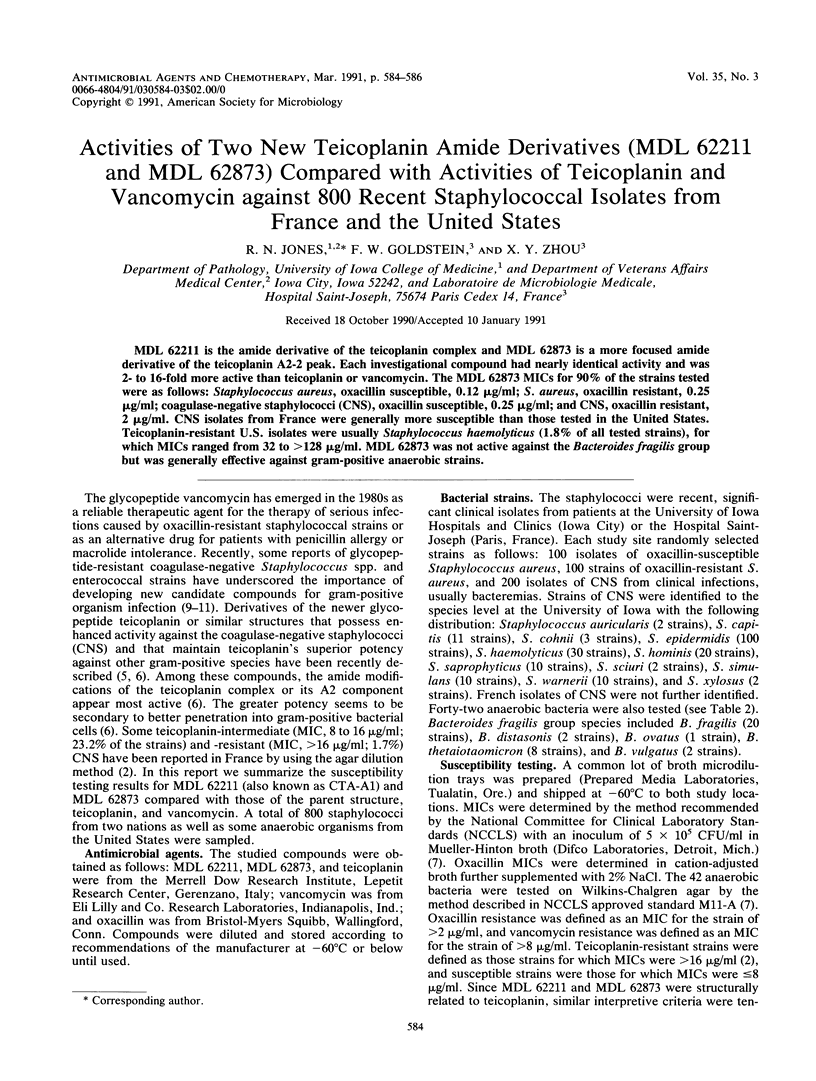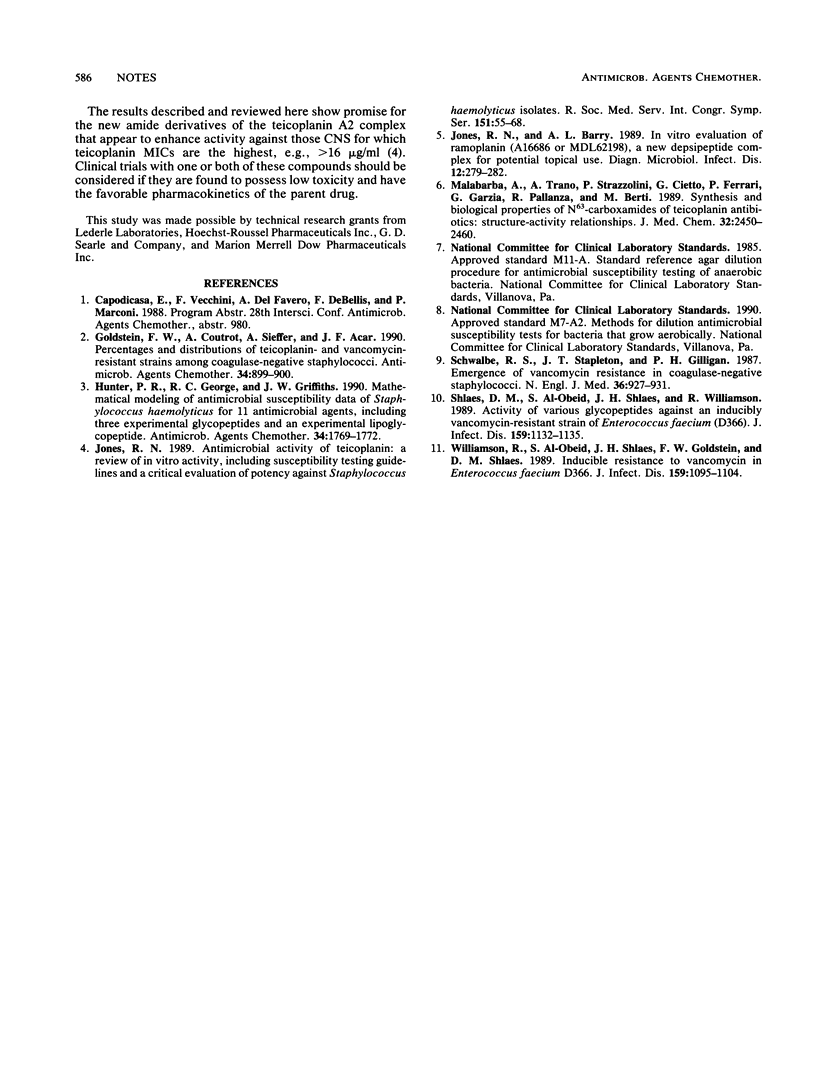Abstract
MDL 62211 is the amide derivative of the teicoplanin complex and MDL 62873 is a more focused amide derivative of the teicoplanin A2-2 peak. Each investigational compound had nearly identical activity and was 2- to 16-fold more active than teicoplanin or vancomycin. The MDL 62873 MICs for 90% of the strains tested were as follows: Staphylococcus aureus, oxacillin susceptible, 0.12 micrograms/ml; S. aureus, oxacillin resistant, 0.25 micrograms/ml; coagulase-negative staphylococci (CNS), oxacillin susceptible, 0.25 micrograms/ml; and CNS, oxacillin resistant, 2 micrograms/ml. CNS isolates from France were generally more susceptible than those tested in the United States. Teicoplanin-resistant U.S. isolates were usually Staphylococcus haemolyticus (1.8% of all tested strains), for which MICs ranged from 32 to greater than 128 micrograms/ml. MDL 62873 was not active against the Bacteroides fragilis group but was generally effective against gram-positive anaerobic strains.
Full text
PDF


Selected References
These references are in PubMed. This may not be the complete list of references from this article.
- Goldstein F. W., Coutrot A., Sieffer A., Acar J. F. Percentages and distributions of teicoplanin- and vancomycin-resistant strains among coagulase-negative staphylococci. Antimicrob Agents Chemother. 1990 May;34(5):899–900. doi: 10.1128/aac.34.5.899. [DOI] [PMC free article] [PubMed] [Google Scholar]
- Hunter P. R., George R. C., Griffiths J. W. Mathematical modeling of antimicrobial susceptibility data of Staphylococcus haemolyticus for 11 antimicrobial agents, including three experimental glycopeptides and an experimental lipoglycopeptide. Antimicrob Agents Chemother. 1990 Sep;34(9):1769–1772. doi: 10.1128/aac.34.9.1769. [DOI] [PMC free article] [PubMed] [Google Scholar]
- Jones R. N., Barry A. L. In vitro evaluation of ramoplanin (A16686 or MDL62198). A new depsipeptide complex for potential topical use. Diagn Microbiol Infect Dis. 1989 May-Jun;12(3):279–282. doi: 10.1016/0732-8893(89)90029-1. [DOI] [PubMed] [Google Scholar]
- Malabarba A., Trani A., Strazzolini P., Cietto G., Ferrari P., Tarzia G., Pallanza R., Berti M. Synthesis and biological properties of N63-carboxamides of teicoplanin antibiotics. Structure-activity relationships. J Med Chem. 1989 Nov;32(11):2450–2460. doi: 10.1021/jm00131a007. [DOI] [PubMed] [Google Scholar]
- Schwalbe R. S., Stapleton J. T., Gilligan P. H. Emergence of vancomycin resistance in coagulase-negative staphylococci. N Engl J Med. 1987 Apr 9;316(15):927–931. doi: 10.1056/NEJM198704093161507. [DOI] [PubMed] [Google Scholar]
- Shlaes D. M., Al-Obeid S., Shlaes J. H., Williamson R. Activity of various glycopeptides against an inducibly vancomycin-resistant strain of Enterococcus faecium (D366). J Infect Dis. 1989 Jun;159(6):1132–1135. doi: 10.1093/infdis/159.6.1132. [DOI] [PubMed] [Google Scholar]
- Williamson R., Al-Obeid S., Shlaes J. H., Goldstein F. W., Shlaes D. M. Inducible resistance to vancomycin in Enterococcus faecium D366. J Infect Dis. 1989 Jun;159(6):1095–1104. doi: 10.1093/infdis/159.6.1095. [DOI] [PubMed] [Google Scholar]


